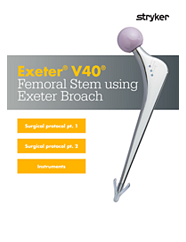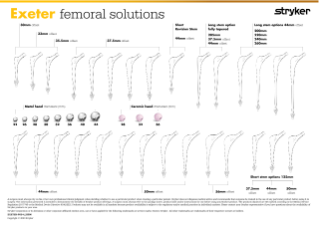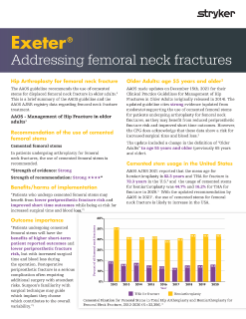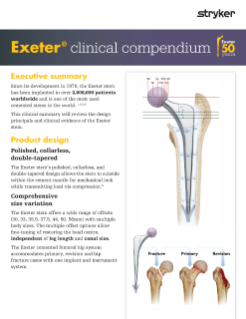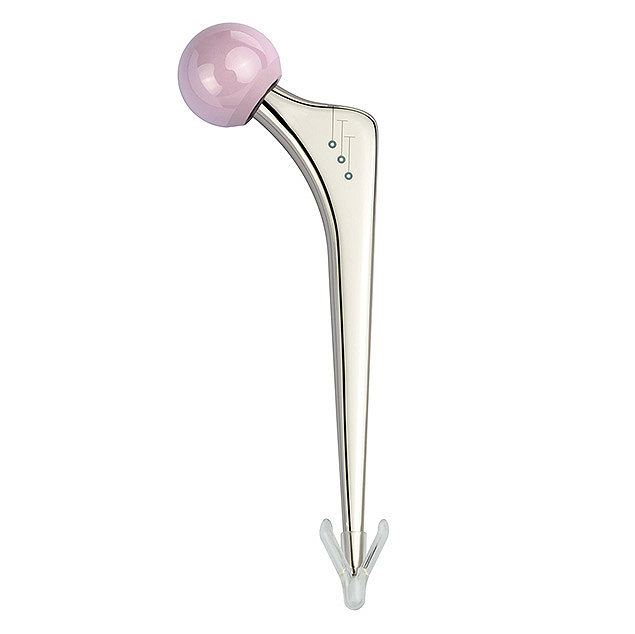
Exeter® Cementing our place in history
Share in over 50 years of esteemed heritage. The Exeter hip stem is an established cemented solution to total hip arthroplasty and continues to be a leading choice of implant as shown in several national joint registries.1,2 Since its launch in 1970, over 160 Exeter stems on average have been implanted per day.5 This hip system, which has remained a market leader for several decades3, is designed to accommodate an expansive variety of cases with one system.
Key benefits
With over 50 years of proven clinical history that has transformed the lives of over 2.1 million patients, Exeter has demonstrated successful clinical performance in peer-reviewed medical journals and national joint registries.1–5
Exeter offers a wide range of offset and body size variations to fit varying morphologies.
29 stems with 30-56mm offset range
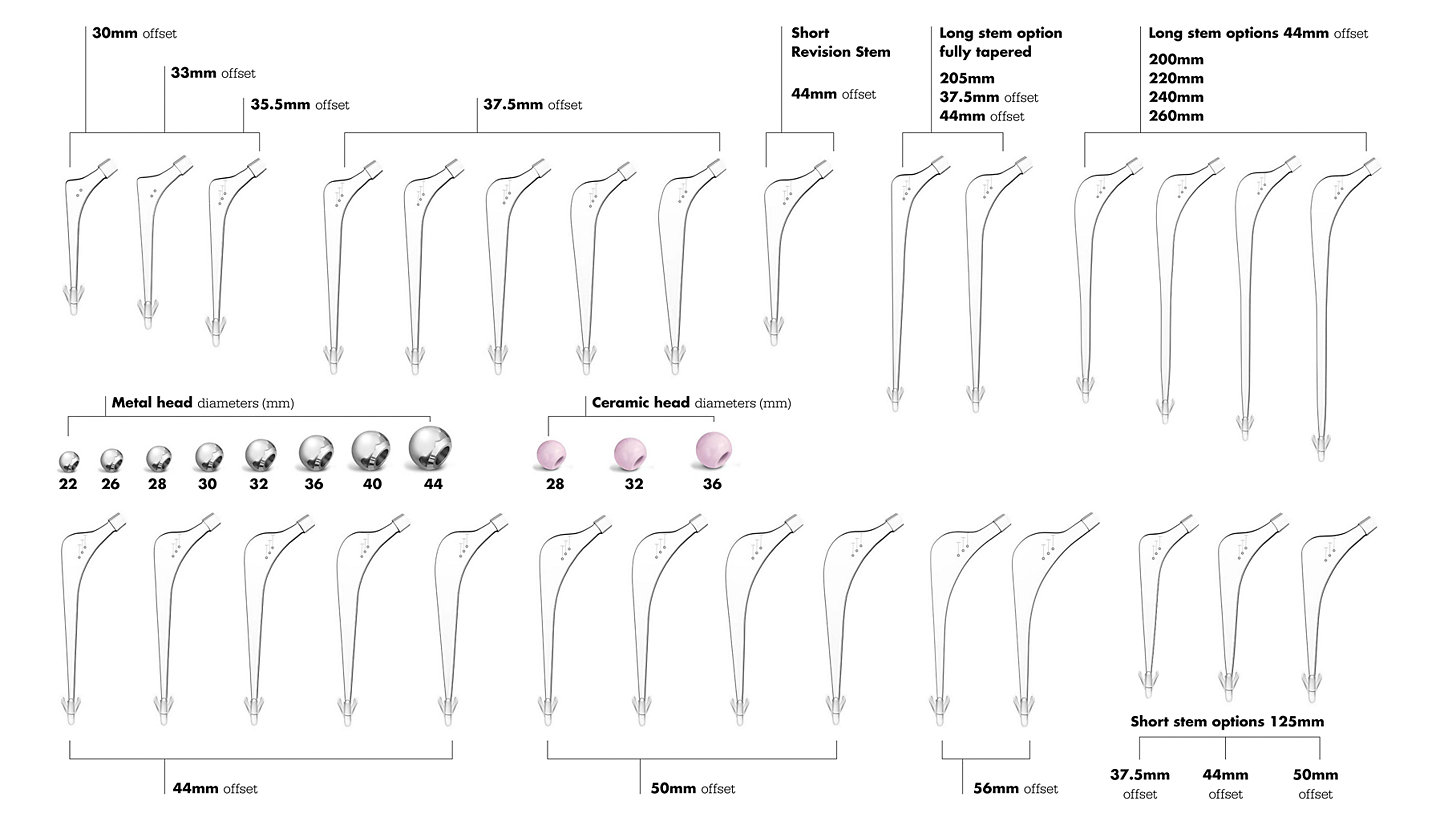
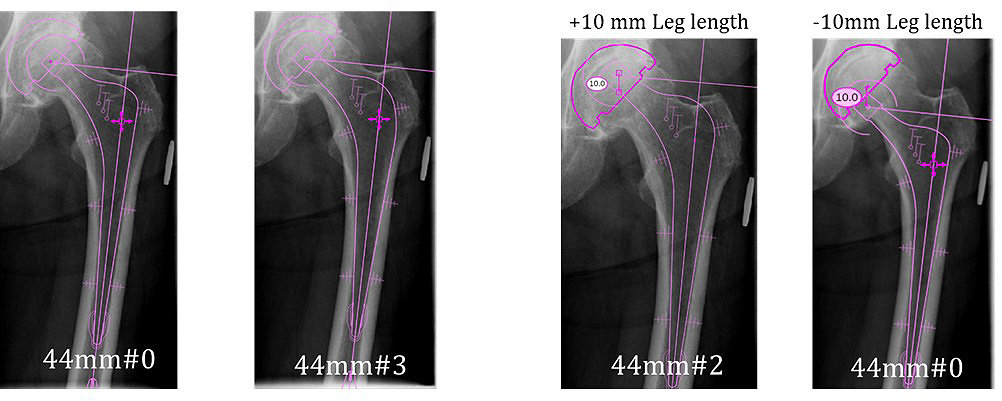
Offset-based system
Multiple offset options and body sizes allow fine-tuning of restoring the head center, independent of leg length and canal size.
One implant and instrument system that is designed to accommodate primary, revision, and hip fracture cases.
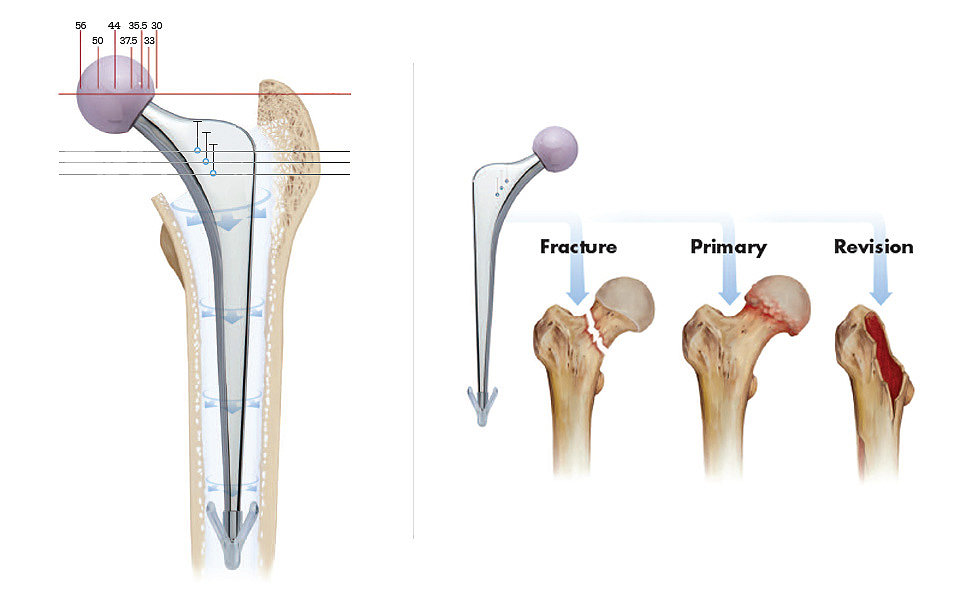
Clinical evidence
In one study, the authors concluded “The hybrid Exeter V40 Trident seemed to produce the best overall results”6
In patients over 75 years old, early revision was 9.14x more common in the best three cementless stems compared to the best three cemented stems in the Australian registry.10 In another study featuring 32,644 primary total hip arthroplasties, cementless stems were found 14x more likely to cause intraoperative fractures, and 10x more likely to cause postoperative fractures within 30 days than cemented stems.11
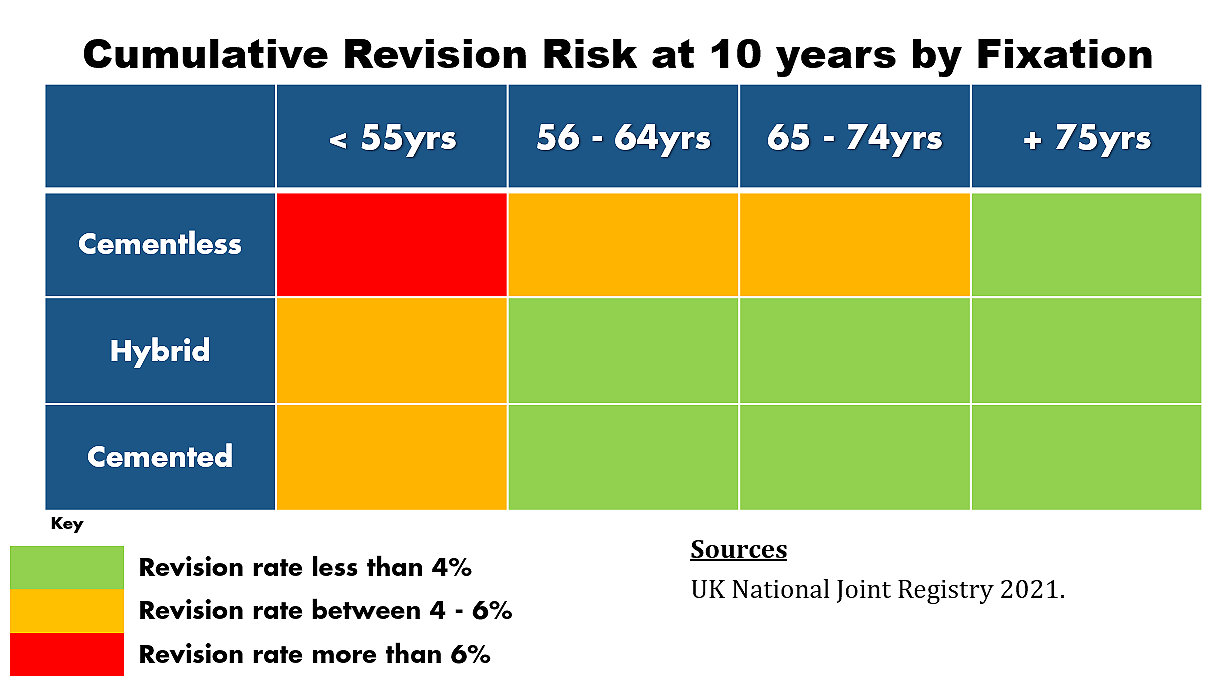

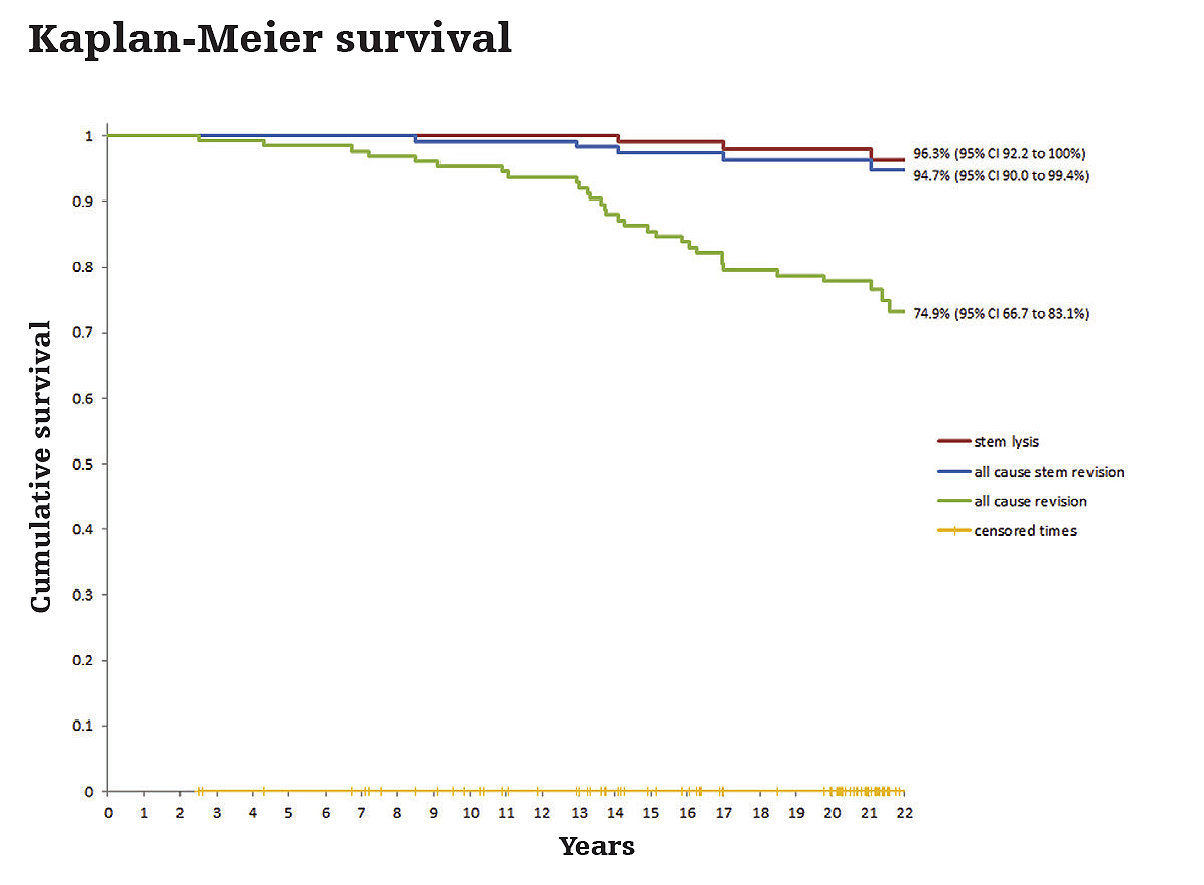
“The Exeter cemented stem has excellent survivorship at minimum 20 years in young patients [107 patients under 55 years of age].”12
“No stem was revised for aseptic loosening in this series [featuring 540 total hip arthroplasties]. The contemporary Exeter V40 stem continues to perform well, and survival has remained comparable with that of the Exeter Universal stem.”13
Videos
Mako compatibility
Know more. Ream less.

Mako SmartRobotics combines three key components: 3D CT-based planning, AccuStop haptic technology, and insightful data analytics, into one platform that has shown better outcomes for your total knee, total hip and partial knee patients.7,8,13
Mako SmartRobotics™ with Exeter empowers surgeons to know more through CT based planning, unlocking patient specific planning and robotic-arm assisted execution which is designed to help preserve bone and facilitate precise implant placement for both acetabular and femoral components. This system enables surgeons to more easily tackle muscle-sparing approaches through approach-specific registration.*
*Access to the Mako Program Analytics offering requires execution of a separate Mako Program Analytics agreement.
DART™
Direct Anterior Reconstructive Technology
Exeter offers SOMA-designed short (125mm) stem options to meet the needs for muscle sparing approaches like Direct Anterior, and for patients with Dorr Type-A femurs.
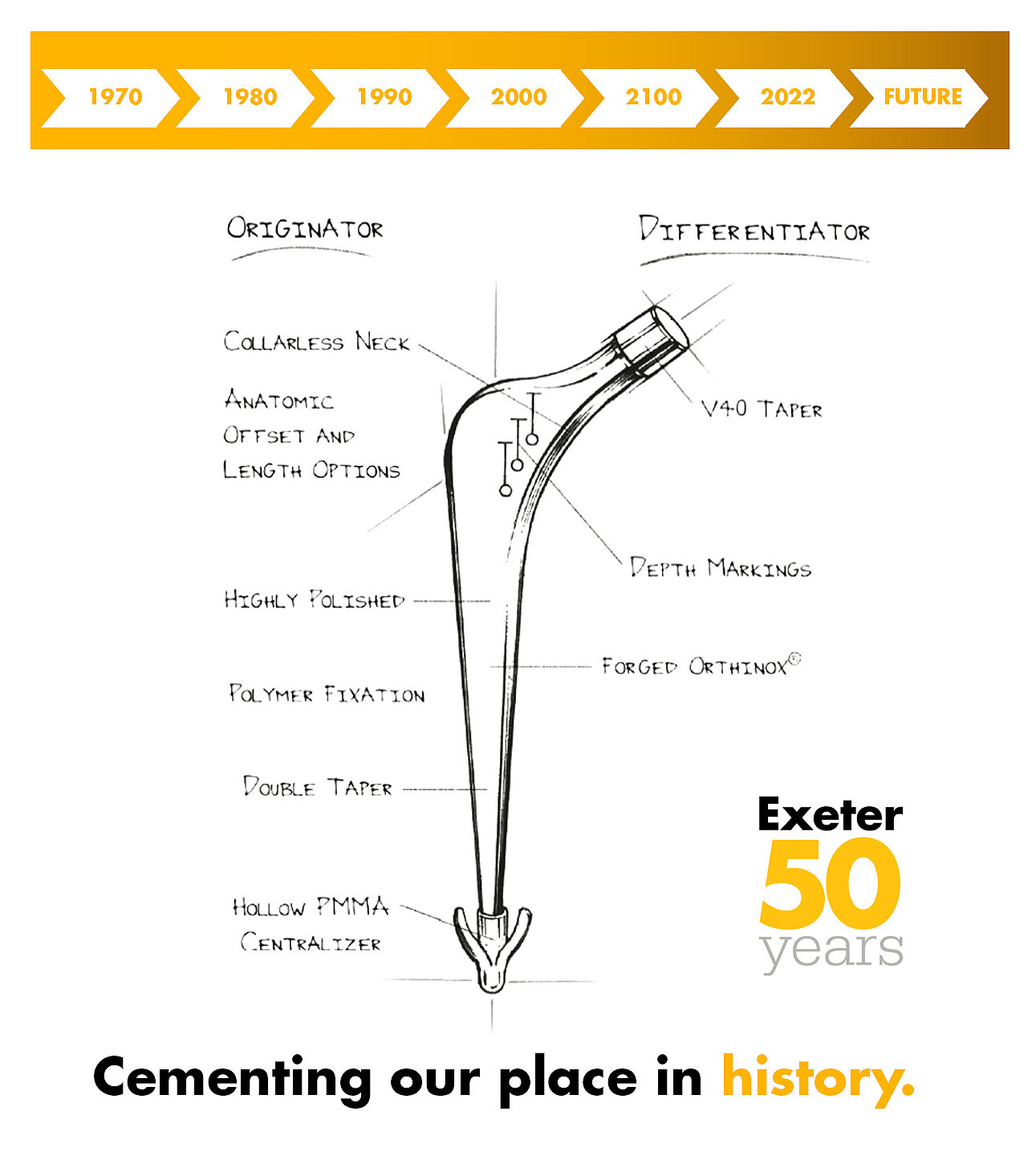
Check out the resources below to learn more!
References:
1. National Joint Registry for England, Wales and Northern Ireland and Isle of Man. 17thAnnual Report. 2020.
2. National Joint Replacement Registry. Hip, Knee & Shoulder Arthroplasty Annual Report2020. Australian Orthopaedic Association; 2020.
3. Thompson JW, Corbett J, Bye D, Jones A, Tissingh EK, Nolan J. Analysis of the Exeter V40femoral stem prosthesis fracture : systematic review and single centre case series. Bone JtOpen. 2021 Jun;2(6):443-456. doi: 10.1302/2633-1462.26.BJO-2021-0025.R1. PMID:34176335; PMCID: PMC8244800.
4. Swedish Hip Arthroplasty Register 2016.
5. Stryker sales data 1970-2022.
6. Pennington M, et al. Functional outcome, revision rates and mortality after primary total hipreplacement--a national comparison of nine prosthesis brands in England. PLoS One. 2013Sep 4;8(9):e73228.
7. Petheram TG, Whitehouse SL, Kazi HA, et al. The Exeter Universal cemented femoral stem at20 to 25 years: A report of 382 hips. Bone Joint J. 2016 Nov;98-B(11):1441-1449. SwedishHip Arthroplasty Register 2016.
8. Illgen, R, Bukowski, B, Abiola, R, Anderson, P, Chughtai, M, Khlopas, A, Mont, M. Robotic-assisted total hip arthroplasty: Outcomes at minimum two year follow up. SurgicalTechnology International. 2017 July 25; 30:365-372.
9. Kleeblad LJ, Borus T, Coon T, Dounchis J, Nguyen J, Pearle A. Midterm survivorship andpatient satisfaction of robotic-arm assisted medial unicompartmental knee arthroplasty: amulticenter study. The Journal of Arthroplasty. 2018:1-8.
10. Tanzer M, Graves SE, Peng A, Shimmin AJ. Is Cemented or Cementless Femoral StemFixation More Durable in Patients Older Than 75 Years of Age? A Comparison of the Best-performing Stems. Clin Orthop Relat Res. 2018.
11. Abdel MP, Watts CD, Houdek MT, et al. Epidemiology of periprosthetic fracture of the femurin 32,644 primary total hip arthroplasties: a 40-year experience. Bone Joint J. 2016 Apr;98-B(4):461-7
12. Keeling P, Howell JR, Kassam AM, Sathu A, Timperley AJ, Hubble MJW, Wilson MJ,Whitehouse SL. Long-Term Survival of the Cemented Exeter Universal Stem in Patients 50 Years and Younger: An Update on 130 Hips. J Arthroplasty. 2020 Apr;35(4):1042-1047. doi: 10.1016/j.arth.2019.11.009. Epub 2019 Nov 14.
13. Westerman RW, Whitehouse SL, Hubble MJW, Timperley AJ, Howell JR, Wilson MJ. TheExeter V40 cemented femoral component at a minimum 10-year follow-up: the first 540cases. Bone Joint J. 2018 Aug;100-B(8):1002-1009. doi: 10.1302/0301-620X.100B8.BJJ-2017-1535.R1.
14. Kayani B, Konan S, Tahmassebi J, Pietrzak JRT, Haddad FS. Robotic-arm assisted total kneearthroplasty is associated with improved early functional recovery and reduced time tohospital discharge compared with conventional jig-based total knee arthroplasty: aprospective cohort study. The Bone and Joint Journal. 2018;100-B:930-7.
15. Illgen, R, Bukowski, B, Abiola, R, Anderson, P, Chughtai, M, Khlopas, A, Mont, M. Robotic-assisted total hip arthroplasty: Outcomes at minimum two year follow up. SurgicalTechnology International. 2017 July 25; 30:365-372.
EXETER-WC-7_34186

